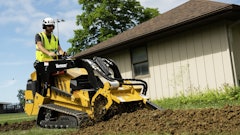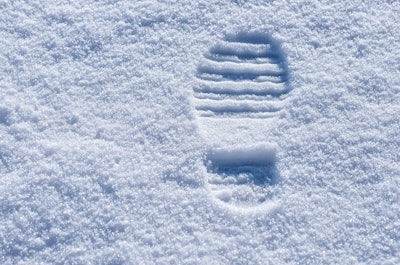
The snow removal business is one that allows for little to no margin for error. That's why clear work processes, documentation and communication are so critical. Before the snow starts falling, you have to know exactly what work you need to do and how you're going to do it.
"When you have a new client, the preparation beforehand—internally in your office, externally on the property, and with the client him or herself—is incredibly important," says Domenic Chiarella, a snow industry veteran who now coaches other snow and landscaping contractors. When we're talking about preparation, we're talking about three key areas: understanding the property, understanding the client's needs and preferences, and understanding your communications plan—communications between your client and your company.
Once a contract is secured, Chiarella likes to utilize work orders to ensure that everything is clearly spelled out and that all stakeholders are on the same page. Three types of work orders exist—accounting, sales and production—each derived from the sales order or contract. "These are really just detailed lists of what to do and how to do it," Chiarella points out. "And they can all be generated pretty easily by common software such as QuickBooks, which a lot of contractors are already using."
In accounting, for instance, staff need to understand when and how to invoice and collect, client by client, including contact names and contact information. This should all be on the accounting work order for that client.
"I know that a lot of people are trying to go paperless as much as possible these days, but this is an area where a good hard copy file is still important—especially for smaller companies," Chiarella says. "Each client should have their own folder with a copy of the accounting work order and contact information, the contract, property maps and photos, etc."
The sales department also gets its own work order. Its next step is to schedule a meeting with both the client and the production team that will be servicing that client's property. This meeting is where the vitally important production work order gets fleshed out.
On Site and on the Ball
Chiarella says his production work order is designed as a tool to help facilitate a good discussion between the contractor and the client. Walk around the site with the client and your crew chief. Make sure you have a copy of the contract with you. Also, prepare a one-page document containing all key contacts in your company, such as the account manager, dispatcher and office manager. Then the client knows whom to call before, during and after the storm should they have any questions.
"You want to stake the property as you tour it," Chiarella says. "Additionally, you want to understand where the more difficult areas are. You want to know where the hydrants and walkways and gardens are. Also, and this is where client preferences come into play, you want to understand where the higher-priority areas are so your crews know that those areas need to be tended to first. These are all things you need to have buttoned up so that you know it, your client knows it, your crews or subs know it—and it is documented.
Other things to document on the production work order include:
- Loading docks. When do they need to be open, when do they close, when do deliveries normally come?
- Holidays. Which does the client remain open for?
- Events. Any important events taking place such as meetings, open houses or other social gatherings? If so, when?
- Staging. Where on the property can you stage materials and equipment like skid steers?
"Bring a camera and take pictures," Chiarella advises. Take photos of the docks and tricky areas, along with the areas you're going to be staging equipment and piling snow. You should also sketch out a diagram of each property or perhaps utilize one of today's tech tools, such as Google Earth, and note these areas on the diagram.
Work orders, photos and diagrams all lead to the action plan. Each crew should have its own action plan binder, complete with said components for each property in its route. "You don't want to make it overly complicated," Chiarella points out, "but you want to give the crew the information it needs to properly service a property before the first flake falls. When all of this is prepared in advance, now the crew can just focus on getting out there and getting the work done—efficiently and safely."
Now You're Running the Show
When a client sees how organized and professional you are, how you're staking the property with solid pieces of wood they can't pull out, how you're walking and making notes in order to really have a thorough understanding of the property, it goes a long way. "They realize you are not working for them, because it's really a collaboration," Chiarella points out. "If you come in disorganized, looking like some Mickey Mouse operation, they are going to feel like they need to run you, and that only makes this more difficult and stressful."
You also show them that they are in a route system, whether it's four or six or eight hours, or whatever. "They're still going to give you a call once in a while, especially during big storms, but they are going to know that you're running the ship and that they can trust you. But if you appear disorganized and lose their faith, they will run you—and that can really mess your company up."
On the topic of dispatching, your dispatcher needs to keep really good logs. For instance, if a client calls in, the dispatcher needs to write down the person's name, the property, the time of the call, the problem, whether or not they want a callback, and whether or not the issue was resolved and how. "When a client sees all of this, they are going to trust you and not try to push you around," Chiarella says.
That's great, because the only thing that should be getting pushed around this coming winter is snow.


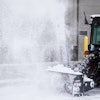

![Doosan Bobcat Wacker Neuson Stack 2ec Js Pb V6e[1]](https://img.greenindustrypros.com/mindful/acbm/workspaces/default/uploads/2025/12/doosan-bobcat-wacker-neuson-stack2ecjspbv6e1.CPyyz8ubHn.png?auto=format%2Ccompress&bg=fff&fill-color=fff&fit=fill&h=100&q=70&w=100)
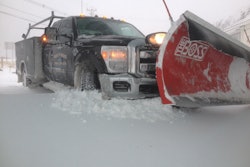
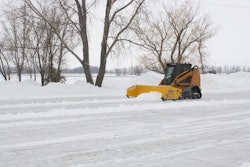
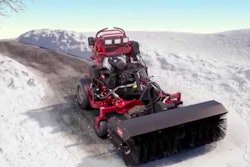


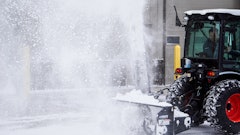

![Doosan Bobcat Wacker Neuson Stack 2ec Js Pb V6e[1]](https://img.greenindustrypros.com/mindful/acbm/workspaces/default/uploads/2025/12/doosan-bobcat-wacker-neuson-stack2ecjspbv6e1.CPyyz8ubHn.png?ar=16%3A9&auto=format%2Ccompress&bg=fff&fill-color=fff&fit=fill&h=135&q=70&w=240)
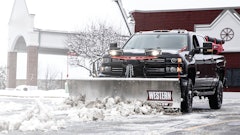
![Gravely Pro Turn Mach One My23 Dsc03139 Edit 1200x800 5b2df79[1]](https://img.greenindustrypros.com/mindful/acbm/workspaces/default/uploads/2025/10/gravely-pro-turn-mach-one-my23-dsc03139-edit-1200x800-5b2df791.BucBnDoN22.jpg?ar=16%3A9&auto=format%2Ccompress&fit=crop&h=135&q=70&w=240)
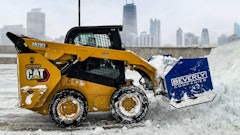
![Kubota Snow ah3 Sgv25ua[1]](https://img.greenindustrypros.com/mindful/acbm/workspaces/default/uploads/2025/10/kubota-snowah3sgv25ua1.bAUoUSziui.png?ar=16%3A9&auto=format%2Ccompress&bg=fff&fill-color=fff&fit=fill&h=135&q=70&w=240)


